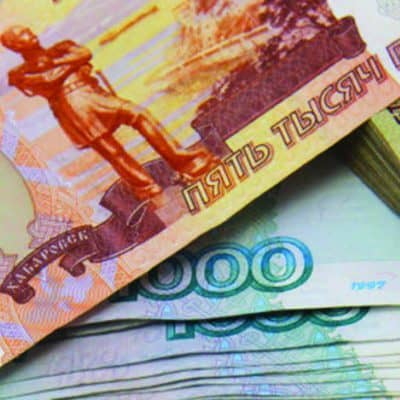Questions remain over the global economic impact of Beijing’s efforts to reduce its financial reliance on the U.S.
–via Permission from ft.com — Financial Times
When an economic theme goes global, Hollywood is never far behind. In the futuristic thriller Looper, retired hit man Bruce Willis travels back in time from the year 2074. Upon meeting his younger self, he advises him to stop learning French and instead head to China. In the future, Shanghai is the centre of the world and the renminbi the currency of choice.
While time travel and flying cars may not be on the horizon, at least one aspect appears closer to reality and movie bad guys are not the only ones eager to get their hands on a few “redbacks”. An “age of Chinese capital”, as Deutsche Bank calls it, is dawning, raising the prospect of fundamental changes in the way the world of finance is wired. Not only is capital flowing more freely out of China, the channels and the destinations of that flow are shifting significantly in response to market forces and a master plan in Beijing, several analysts and a senior Chinese official say.
In a nutshell, three big and inter-related changes are under way. China’s appetite for US Treasury bonds, a cornerstone of the global economy for more than a decade, is waning. Beijing is ramping up its overseas development agenda to boost financial returns and serve key geopolitical interests. The promotion of the renminbi as an international currency is gradually liberating Beijing from the dollar zone, providing it with more latitude to open up to foreign portfolio investment flows.
The reorientation of China’s strategy away from Treasuries is a slow-running trend but one which intensified last month after Li Keqiang, the premier, announced a 10-point plan for financial reform. One of the points dealt with the deployment of China’s $3.9tn in foreign currency reserves, chunks of which have been recycled into Treasuries for more than a decade, helping to keep US interest rates low and underpin economic growth in the west. However, the new plan says: “Better use should be made of China’s foreign exchange reserves to support the domestic economy and the development of an overseas market for Chinese high-end equipment and goods.”
A senior Chinese official, who declined to be identified, elaborated on what the plan is likely to mean in practice. “This is a big change and it cannot happen too quickly, but we want to use our reserves more constructively by investing in development projects around the world rather than just reflexively buying US Treasuries,” the official says. “In any case, we usually lose money on Treasuries, so we need to find ways to improve our return on investment,” he says.
Rewiring global finance
Not only is China’s desire to buy US debt diminishing, so is its ability to do so. The banner years of Treasury bond purchases, during which holdings rose 21-fold over a 13-year period to hit $1.27tn by the end of 2013, were driven by an imperative to recycle China’s soaring US dollar current account surpluses.
But these surpluses are narrowing sharply — from the equivalent of 10.3 per cent of gross 2007 to 2.0 per cent in 2013. In fact, if financial flows are taken into account, China ceased over the most recent four quarters to be a net exporter of capital at all.
The impact on Treasury purchases is evident in the tapering of Chinese buying over the past three years. But analysts see structural forces driving a steeper downturn in the future.
“I absolutely think we are going to see smaller Chinese current account surpluses in the future because of greater Chinese spending overseas on tourism and services and greater spending power at home may lead to more imports,” says Jan Dehn, head of emerging market research at the Ashmore fund.
All of this leads to a burning question: how convulsive an impact on US debt financing — and therefore on global interest rates — will the changes under way in China have? Analysts hold views across a spectrum that ranges from those who see an imminent bonfire of US financial complacency to those who see little change and no cause for concern. Occupying a space between these extremes are those, such as Michael Power of Investec, who see potential for a disruptive rewiring of international capital flows, but no certainty that such an outcome will transpire.
“If China starts to pursue investment programmes like developing infrastructure to regenerate the trans-Asian Silk Road, it will no longer be banking most of its surplus savings in US Treasuries,” says Mr Power.
A decade ago Alan Greenspan, the then chairman of the US Federal Reserve, found his attempts to coax US interest rates upwards negated by Beijing parking its surplus savings into Treasuries. Arguably, says Mr Power, a bond bubble has existed ever since.
“If China is now set to redeploy those deposits into capital investment the world over, does this mean the [Greenspan] conundrum will be at last ‘solved’ but at the cost of an imploding Treasury market?” Mr Power asks. “If so, this will raise the corporate cost of capital in the west and put yet another brake on already tepid western GDP growth.”
Stephanie Pomboy, president at Macro Mavens, a US-based economics research consultancy, sees a more present peril. “The conviction that the rest of the world [China and Japan in particular] have no choice but to maintain their attachment to the US dollar is as strong as ever,” she says. “Wallowing in this illusion, investors see no long-term threat to the dollar’s status, even as each day it diminishes in use.”
Locked in
Others, however, say that China is effectively locked into a steady continuation of US Treasury investment because any sudden selldown of its huge holdings could send Treasury prices into a tailspin, thereby slashing the value of Beijing’s position. In addition, says Jonathan Anderson of Emerging Advisors Group, China’s Treasury investments are a byproduct of Beijing’s intervention in currency markets to prevent the type of surge in the renminbi’s value that would have eroded the competitiveness of its exports.
What is clear is that Beijing’s intention to diversify the deployment of its foreign exchange reserves is strengthening. Over the past six months, it has driven the creation of three international institutions dedicated to development finance: the Shanghai-based New Development Bank along with Brazil, Russia, India and South Africa; the Asian Infrastructure Investment Bank and the Silk Road Fund.
Each is likely, or explicitly designated, to receive funding from the foreign currency reserves. Their importance can be judged from their centrality to President Xi Jinping’s aim to realise the “Chinese dream” of recapturing the status the country enjoyed during the most powerful passages in its history, say Chinese officials. The $40bn Silk Road Fund, announced last month, demonstrates Beijing’s ambitions clearly. Set to be funded to the tune of some 65 per cent from the foreign reserves, the fund is charged with achieving Mr Xi’s vision of building a “Silk Road economic belt” across central Asia to Europe and weaving a “21st century maritime Silk Road” through the sea lanes of the South China Sea and the Indian Ocean.
“By building roads and railways over its borders and upgrading ports in Asia, Beijing is tying its neighbours’ prosperity to their relationship with China,” says Tom Miller, senior Asia analyst at Gavekal Dragonomics, a research consultancy. “It is an attempt to restore China’s position at the heart of Asia.”
The infrastructure work will directly benefit the big Chinese construction and equipment companies that are awarded contracts financed by China-backed institutions. This, in turn, should boost the country’s chances of realising Mr Xi’s prediction that Chinese companies will invest some $1.25tn overseas during the next decade.
Renminbi
The launch of these development institutions is only one strand in China’s aim to make finance serve geostrategic goals. An older, but perhaps more important element, is the promotion of the renminbi as an international currency. The drive to internationalise it is derived from a desire to carve out China’s own space within a US-dominated global financial system.
The process accelerated with the outbreak of the global financial crisis in 2008 as policy makers in Beijing realised their economy’s fate was umbilically linked to that of the US.
“We hate you guys”, was how Luo Ping, an official at the China Banking Regulatory Commission vented his frustration in 2009. He and others in China believed that, as the US Federal Reserve printed more money to resuscitate American demand, the value of China’s foreign reserves would plunge.
“Once you start issuing $1tn- $2tn . . . we know the dollar is going to depreciate so we hate you guys — but there is nothing much we can do,” Mr Luo told a New York audience.
In an indication of intent, Wang Qishan, then a vice-premier and now one of Mr Xi’s closest allies in the Politburo Standing Committee, was appointed in 2009 to promote the use of the renminbi in trade settlement and investment around the world. The process is driven mainly by an imperative to decouple China by degrees from its financial reliance on the US and from Washington’s influence over its domestic monetary policy, officials say. As a mechanism towards this end, China is earning a greater proportion of its trade and financial receipts in renminbi. Because these earnings do not have to be recycled into dollar-denominated assets, they can be ploughed back into the domestic economy, thus benefiting Chinese rather than US capital markets.
The renminbi’s progress has been more rapid than many expected. In October, more than 22 per cent of China’s trade was settled in its own currency, according to Standard Chartered, up from almost nothing five years ago. Data from Swift, the international currency clearing system, shows it is now the seventh most used currency for payments. Portfolio investors are seeking it out, particularly after the opening last month of the Shanghai-Hong Kong stock connect, an initiative that provides the most unfettered access yet to the Shanghai stock market for foreigners holding offshore renminbi. Western governments are endorsing the currency, with the UK, Australia’s state of New South Wales and the Canadian province of British Columbia issuing renminbi-denominated debt in the past months. Michael de Jong, finance minister of British Columbia, says the debt issue fulfilled several aims, including improving ties with China and attracting financial services from the US.
“I see the full internationalisation of the renminbi as inevitable; it’s a question of when,” adds Mr de Jong.
Such optimism will be welcomed in Beijing as it pursues a master plan to break free of US dominance in global finance and create a parallel, Sino-centric system that takes its cue from a mighty renminbi. Of course, much could yet conspire to blow China’s ambitions off course. But if even half of what it envisages is achieved, the impact on US debt financing, the future of development finance and the opening of Chinese financial markets to international capital would be profound.










